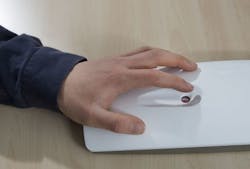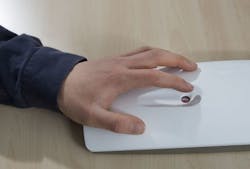Laser sensor device is promising for noninvasive blood glucose monitoring
A team of researchers at the University of Leeds in England has developed a new laser sensor that monitors blood glucose levels without penetrating the skin. The new technology, developed by Professor Gin Jose, uses a small device with low-powered lasers to measure blood glucose levels, which could give people with diabetes a simpler, pain-free alternative to finger pricking.
Related: Speckle effect enables noninvasive glucose, pulse readings
The technology has continuous monitoring capabilities, making it ideal for development as a wearable device. This could help improve the lives of millions of people by enabling them to constantly monitor their glucose levels without the need for an implant.
At the heart of the sensor device is a piece of nanoengineered silica glass with ions that fluoresce in infrared light when a low-power laser light hits them. When the glass is in contact with the users' skin, the extent of fluorescence signal varies in relation to the concentration of glucose in their blood. The device measures the length of time the fluorescence lasts for and uses that to calculate the glucose level in a person’s bloodstream without the need for a needle. This process takes less than 30 s.
The technology is licensed to Glucosense Diagnostics, a spin-out company jointly formed and funded by the University of Leeds and NetScientific plc, a biomedical and healthcare technology group that specializes in commercializing transformative technologies from leading universities and research institutes.
“Currently, we are piloting a bench top version in our clinical investigations but aim to develop two types of devices for the market," Jose says. "One will be a finger-touch device similar to a computer mouse. The other will be a wearable version for continuous monitoring.”
More clinical trials and product optimization are required for regulatory approvals and before the technology can be put on the market.
For more information, please visit www.glucosense.net.
Follow us on Twitter, 'like' us on Facebook, connect with us on Google+, and join our group on LinkedIn

